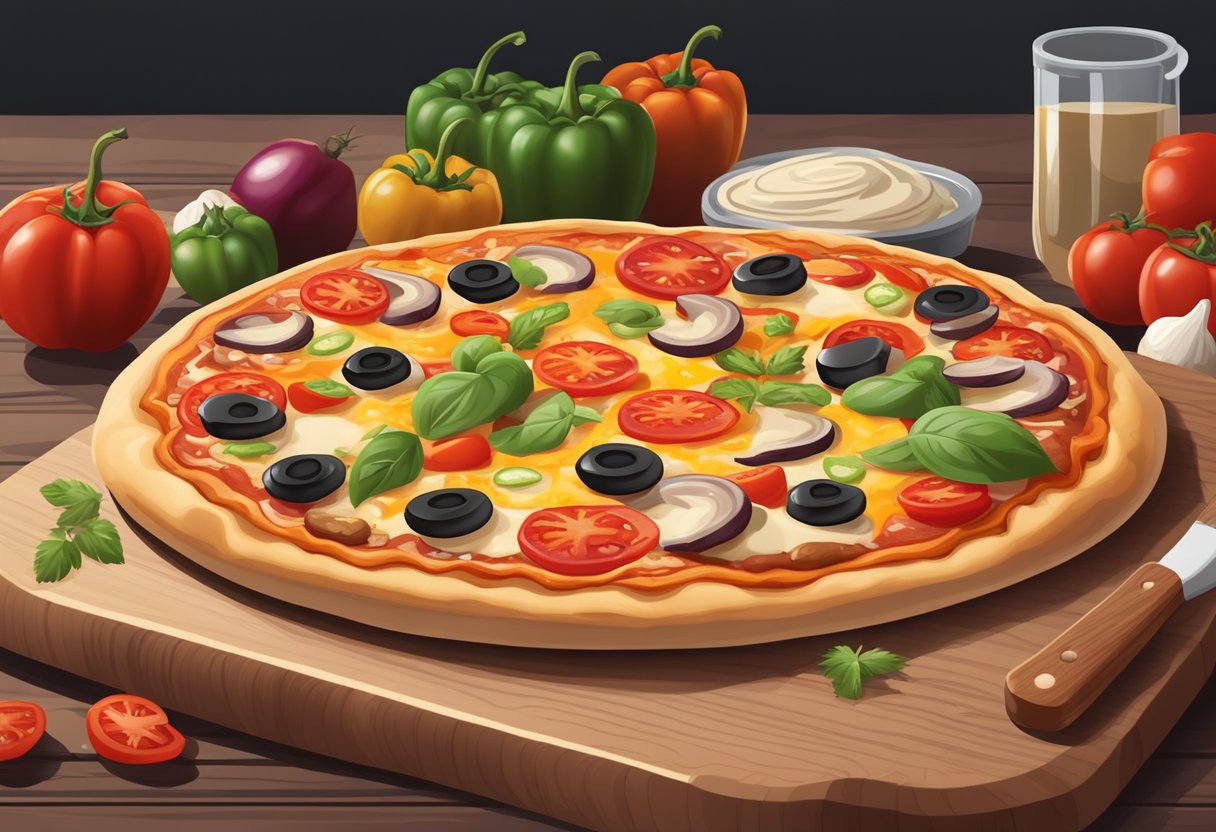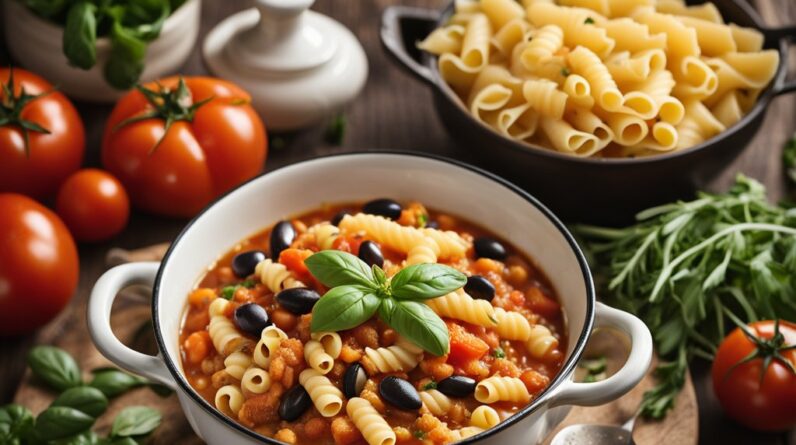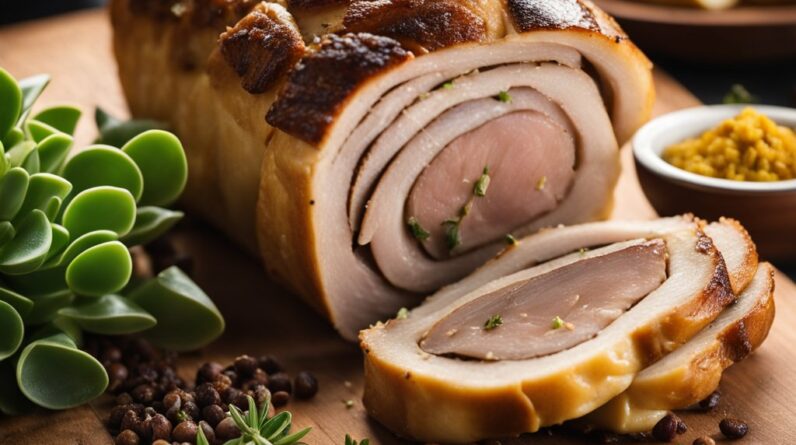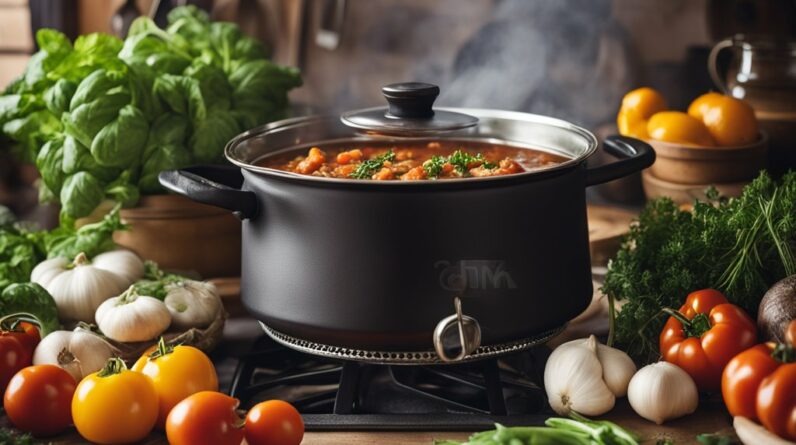How to Make Thin Crust Pizza: A Clear and Confident Guide
Thin crust pizza is a popular choice among pizza lovers. It is crispy, flavorful, and allows the toppings to shine. Making a thin crust pizza at home may seem daunting, but with the right techniques and ingredients, it can be a fun and rewarding experience.
The first step in making a thin crust pizza is selecting the right ingredients. High-quality flour, yeast, salt, and water are essential for a flavorful and crispy crust. It is also important to choose fresh and flavorful toppings that complement the crust. Once the ingredients are selected, the dough can be prepared.
Preparing the dough for a thin crust pizza requires attention to detail. The dough should be kneaded until it is smooth and elastic, and then allowed to rise until it doubles in size. After the dough has risen, it can be rolled out into a thin crust and topped with sauce and toppings. The pizza can then be baked to perfection. By following these steps, anyone can make a delicious thin crust pizza at home.
Key Takeaways
- Select high-quality ingredients for a flavorful and crispy crust.
- Knead the dough until it is smooth and elastic, and allow it to rise until it doubles in size.
- Roll out the dough into a thin crust and top with fresh and flavorful ingredients before baking to perfection.
Ingredients Selection
When making thin crust pizza, selecting the right ingredients is crucial to achieving the perfect balance of flavor and texture. Here are some tips for choosing the best ingredients:
Choosing the Flour
The type of flour you use will have a significant impact on the texture and flavor of your pizza crust. For a thin crust pizza, it’s best to use a high-protein flour, such as bread flour or all-purpose flour. These flours have a higher gluten content, which will help create a chewy and crispy crust.
Selecting Fresh Yeast
Fresh yeast is essential for making a great pizza crust. It’s important to choose fresh yeast that is plump and moist, with no signs of dryness or discoloration. If you can’t find fresh yeast, you can use active dry yeast, but be sure to activate it in warm water before using it in your dough.
Picking the Right Cheese
When it comes to cheese, it’s important to choose a variety that will melt well and complement the other flavors on your pizza. For a classic thin crust pizza, mozzarella cheese is the go-to choice. However, you can also experiment with other types of cheese, such as provolone, fontina, or even goat cheese.
Sourcing Tomatoes for Sauce
The quality of your tomato sauce will make or break your pizza. Look for canned San Marzano tomatoes, which are known for their sweet and tangy flavor and low acidity. Alternatively, you can use fresh tomatoes, but be sure to remove the seeds and skin before using them in your sauce.
By following these tips for ingredient selection, you’ll be well on your way to making a delicious thin crust pizza.
Dough Preparation
Mixing the Ingredients
To make a thin crust pizza, the first step is to mix the dough ingredients properly. The ingredients for the dough usually include flour, yeast, water, salt, and olive oil. It is important to measure the ingredients accurately to achieve the desired consistency of the dough.
One way to mix the ingredients is by using a stand mixer or a food processor. This will ensure that the ingredients are mixed evenly and thoroughly. Alternatively, you can mix the ingredients by hand using a large mixing bowl and a wooden spoon.
Kneading the Dough
After mixing the dough ingredients, the next step is to knead the dough. Kneading is a process of stretching and folding the dough to develop gluten, which is essential for a chewy and crispy crust.
To knead the dough, place it on a floured surface and use your hands to stretch and fold the dough. You can also use a rolling pin to flatten the dough. Knead the dough for at least 10 minutes until it becomes smooth and elastic.
Dough Resting Time
Once the dough is kneaded, it needs to rest for a certain period of time. This allows the gluten to relax and the dough to rise. The resting time can vary depending on the recipe, but it usually takes around 30 minutes to an hour.
Cover the dough with a damp cloth or plastic wrap and let it rest in a warm place. The dough should double in size during this time. After the resting period, the dough is ready to be rolled out and topped with your favorite pizza toppings.
By following these steps for dough preparation, you can make a delicious thin crust pizza with a crispy and chewy crust.
Sauce and Toppings
Making the Tomato Sauce
The tomato sauce is the foundation of any pizza, and making a good one is essential for a delicious thin crust pizza. To make the tomato sauce, start by heating up a tablespoon of olive oil in a saucepan over medium heat. Add a finely chopped onion and cook until it becomes translucent. Then, add two cloves of minced garlic and cook for another minute.
Next, add a can of crushed tomatoes and a pinch of salt. Bring the mixture to a simmer and let it cook for about 10 minutes, stirring occasionally. For extra flavor, add a teaspoon of dried oregano and basil. Once the sauce is done, set it aside to cool.
Preparing Toppings
When it comes to toppings, the possibilities are endless. However, for a thin crust pizza, it’s best to keep it simple and use only a few toppings. Start by prepping your toppings. Slice your vegetables thinly, and cook any meat that needs to be cooked.
To assemble the pizza, spread a thin layer of tomato sauce on the crust, leaving a bit of space around the edges. Add your toppings, starting with the cheese, followed by the vegetables or meat. Be careful not to overload the pizza with too many toppings, as this will make it difficult to cook the crust evenly.
In conclusion, making a delicious thin crust pizza requires a good tomato sauce and well-prepared toppings. By following the steps outlined above, you can create a pizza that is sure to impress.
Assembling the Pizza
Spreading the Dough
Now that the dough has been rolled out, it’s time to transfer it to a pizza peel. If you don’t have a pizza peel, you can use the back of a baking sheet. Make sure to dust the peel or baking sheet with cornmeal or flour to prevent the dough from sticking.
Gently stretch the dough to the desired size and thickness. For a thin crust pizza, aim for a thickness of about 1/8 inch. Be careful not to overwork the dough as this can cause it to become tough and chewy.
Applying Sauce and Toppings
Once the dough is stretched, it’s time to add the sauce and toppings. Start by spreading a thin layer of tomato sauce over the dough, leaving about 1/2 inch of crust around the edges.
Next, add your desired toppings. Keep in mind that less is often more when it comes to pizza toppings. Too many toppings can weigh down the crust and make it soggy. For a classic thin crust pizza, stick to a few simple toppings such as fresh mozzarella, basil, and sliced tomatoes.
After adding the toppings, slide the pizza onto a preheated pizza stone or baking sheet in the oven. Cook for 8-10 minutes or until the crust is golden brown and the cheese is melted and bubbly.
With these simple steps, anyone can make a delicious thin crust pizza at home.
Baking Techniques
Preheating the Oven
Before starting to bake the thin crust pizza, it is essential to preheat the oven to the correct temperature. This ensures that the crust will cook evenly and become crispy. The ideal temperature for baking thin crust pizza is between 450-500°F (230-260°C). It is recommended to preheat the oven for at least 30 minutes to ensure that the oven is fully heated.
Using a Pizza Stone or Baking Sheet
Using a pizza stone or baking sheet is an excellent way to ensure that the crust cooks evenly and becomes crispy. A pizza stone is a thick, flat piece of stone that is placed in the oven to preheat. Once the oven is heated, the pizza can be placed directly onto the stone. The stone will absorb the heat and distribute it evenly, resulting in a crispy crust.
If a pizza stone is not available, a baking sheet can be used instead. It is recommended to preheat the baking sheet in the oven before placing the pizza on it. This will ensure that the crust cooks evenly and becomes crispy.
Baking Time and Temperature
The baking time and temperature are crucial factors in making a perfect thin crust pizza. As mentioned earlier, the ideal temperature for baking thin crust pizza is between 450-500°F (230-260°C). The baking time depends on the thickness of the crust and the toppings used. On average, a thin crust pizza should be baked for 10-15 minutes.
It is essential to keep an eye on the pizza while it is baking to ensure that it does not burn. If the crust starts to turn brown before the toppings are cooked, the oven temperature can be lowered slightly, or the pizza can be moved to a lower rack in the oven.
By following these baking techniques, anyone can make a delicious and crispy thin crust pizza at home.
Serving Suggestions

Slicing the Pizza
Thin crust pizza is best served sliced into small, bite-sized pieces. This allows for easy sharing and ensures that everyone gets a taste of the delicious toppings. To achieve the perfect slice, use a sharp pizza cutter and cut the pizza into even slices. For a professional touch, use a pizza peel to transfer the pizza from the oven to a cutting board before slicing.
Pairing with Sides
Thin crust pizza pairs well with a variety of sides, making it a versatile meal option. Here are a few suggestions to try:
- Salad: A fresh green salad with a light vinaigrette dressing is the perfect complement to a thin crust pizza. The crispness of the salad contrasts with the chewy texture of the pizza, while the acidity of the dressing helps to cut through the richness of the cheese and toppings.
- Garlic Bread: Toasted garlic bread is a classic side dish that pairs perfectly with thin crust pizza. The buttery, garlicky flavor of the bread complements the savory flavors of the pizza, while the crispy texture provides a satisfying contrast.
- Roasted Vegetables: Roasted vegetables, such as bell peppers, onions, and mushrooms, make a healthy and flavorful side dish for thin crust pizza. The sweetness of the vegetables balances out the salty and savory flavors of the pizza, while the caramelized edges provide a satisfying crunch.
Overall, serving thin crust pizza with a variety of sides allows you to create a well-rounded meal that will satisfy even the pickiest eaters.
Storage and Reheating
Storing Leftover Pizza
To store leftover thin crust pizza, it is important to let it cool down to room temperature before putting it in the fridge. This prevents the crust from getting soggy due to condensation. Once cooled, wrap the pizza tightly in plastic wrap or aluminum foil and place it in an airtight container or resealable plastic bag. This will help keep the pizza fresh for up to 3-4 days in the fridge.
If you plan to store the pizza for longer than 4 days, it is recommended to freeze it. Before freezing, wrap each slice individually in plastic wrap or aluminum foil and place them in a resealable plastic bag. This will help prevent freezer burn and keep the pizza fresh for up to 2-3 months.
Reheating for Best Quality
To reheat thin crust pizza, preheat the oven to 375°F (190°C). Remove the pizza from the fridge and let it sit at room temperature for 10-15 minutes. This will help bring it to room temperature and prevent the crust from becoming too crispy.
Once the oven is preheated, place the pizza directly on the oven rack or on a baking sheet. Bake for 10-12 minutes or until the cheese is melted and the crust is crispy. For an extra crispy crust, place the pizza directly on the oven rack.
Alternatively, you can reheat the pizza on the stovetop. Heat a non-stick skillet over medium heat and place the pizza in the skillet. Cover the skillet with a lid and cook for 3-4 minutes or until the cheese is melted and the crust is crispy.
Avoid reheating thin crust pizza in the microwave as it can make the crust soggy and the cheese rubbery. By following these simple steps, you can enjoy leftover thin crust pizza that tastes just as good as when it was fresh out of the oven.
Frequently Asked Questions
What is the best way to keep thin crust pizza crispy?
The best way to keep thin crust pizza crispy is to avoid overloading it with toppings and to bake it at a high temperature. Additionally, use a perforated pizza pan or a pizza stone to allow air to circulate around the crust while it bakes. This will help prevent the crust from getting soggy.
What are the differences between thin crust dough and regular pizza dough?
Thin crust pizza dough has less yeast and less sugar than regular pizza dough. This results in a thinner, crispier crust. Additionally, thin crust dough is often rolled out very thin, which allows it to cook quickly and evenly.
How can you make thin crust pizza dough from scratch?
To make thin crust pizza dough from scratch, you will need flour, yeast, salt, sugar, olive oil, and warm water. Mix the ingredients together in a bowl, knead the dough for a few minutes, and then let it rise for at least an hour. After it has risen, roll it out thinly and add your desired toppings.
What are the optimal toppings for a thin crust pizza?
Thin crust pizza is best topped with light, fresh ingredients such as fresh basil, cherry tomatoes, and mozzarella cheese. Avoid heavy toppings such as sausage or pepperoni, which can weigh down the crust and make it soggy.
Can you make a thin crust pizza without an oven, and if so, how?
Yes, you can make a thin crust pizza without an oven. One method is to use a grill. Simply roll out the dough, add your toppings, and place the pizza on the grill. Cook for a few minutes on each side until the crust is crispy and the cheese is melted.
What is the secret to making the best thin crust pizza dough?
The secret to making the best thin crust pizza dough is to use high-quality ingredients and to knead the dough thoroughly. Additionally, be sure to let the dough rise for at least an hour before rolling it out thinly. Finally, bake the pizza at a high temperature to ensure a crispy crust.












